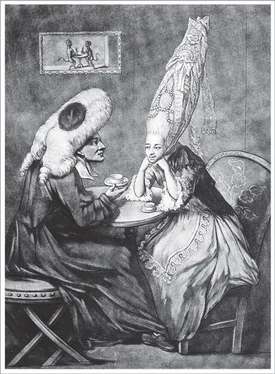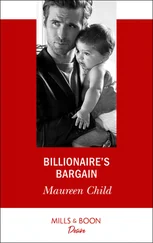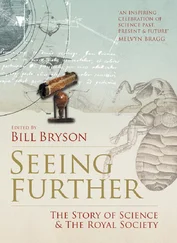Bill Bryson - At Home
Здесь есть возможность читать онлайн «Bill Bryson - At Home» весь текст электронной книги совершенно бесплатно (целиком полную версию без сокращений). В некоторых случаях можно слушать аудио, скачать через торрент в формате fb2 и присутствует краткое содержание. Жанр: Старинная литература, на английском языке. Описание произведения, (предисловие) а так же отзывы посетителей доступны на портале библиотеки ЛибКат.
- Название:At Home
- Автор:
- Жанр:
- Год:неизвестен
- ISBN:нет данных
- Рейтинг книги:4 / 5. Голосов: 1
-
Избранное:Добавить в избранное
- Отзывы:
-
Ваша оценка:
- 80
- 1
- 2
- 3
- 4
- 5
At Home: краткое содержание, описание и аннотация
Предлагаем к чтению аннотацию, описание, краткое содержание или предисловие (зависит от того, что написал сам автор книги «At Home»). Если вы не нашли необходимую информацию о книге — напишите в комментариях, мы постараемся отыскать её.
At Home — читать онлайн бесплатно полную книгу (весь текст) целиком
Ниже представлен текст книги, разбитый по страницам. Система сохранения места последней прочитанной страницы, позволяет с удобством читать онлайн бесплатно книгу «At Home», без необходимости каждый раз заново искать на чём Вы остановились. Поставьте закладку, и сможете в любой момент перейти на страницу, на которой закончили чтение.
Интервал:
Закладка:
Even the simplest things had a glorious pointlessness to them. When buttons came in, about 1650, people couldn’t get enough of them and arrayed them in decorative profusion on the backs and collars and sleeves of coats, where they didn’t actually do anything. One relic of this is the short row of pointless buttons that are still placed on the underside of jacket sleeves near the cuff. These have always been purely decorative and have never had a purpose, yet 350 years on we continue to attach them as if they are the most earnest necessity.
Perhaps the most irrational fashion act of all was the male habit for 150 years of wearing wigs. Samuel Pepys, as with so many things, was in the vanguard, noting with some apprehension the purchase of a wig in 1663 when wigs were not yet common. It was such a novelty that he feared people would laugh at him in church; he was greatly relieved, and a little proud, to find that they did not. He also worried, not unreasonably, that the hair of wigs might come from plague victims. Perhaps nothing says more about the power of fashion than that Pepys continued wearing wigs even while wondering if they might kill him.
Wigs might be made of almost anything—human hair, horsehair, cotton thread, goat hair, silk. One maker advertised a model made of fine wire. They came in many styles—bag, bob, campaign, grizzle, Ramillies, cauliflower, brown tie, riding bob, and more, all denoting some crucial difference in length of braid or bounciness of curl. Wigs were so valuable—a full one could cost £50—that they were left as bequests in wills. The more substantial the wig, the higher up the social echelon one stood—one became literally a bigwig. Wigs were also one of the first things snatched by robbers. The ridiculousness of outsized hairpieces didn’t escape comedic notice. Sir John Vanbrugh in The Relapse had one of his characters, a wigmaker, boast of a wig “so long and full of hair that it may serve you for a hat and cloak in all weathers.”
All wigs tended to be scratchy, uncomfortable, and hot, particularly in summer. To make them more bearable, many men shaved their heads, so we should be surprised to see many famous seventeenth- and eighteenth-century figures as their wives saw them first thing in the morning. It was an odd situation. For a century and a half, men got rid of their own hair, which was perfectly comfortable, and instead covered their heads with something foreign and un comfortable. Very often it was actually their own hair made into a wig. People who couldn’t afford wigs tried to make their hair look like a wig.
Wigs took a lot of maintenance. Once every week or so they had to be sent out to have their buckles (from the French boucles , meaning curls), reshaped on heated rollers, and possibly baked in an oven, a process known as fluxing. From about 1700, for reasons that had nothing to do with common sense or practicality, it became fashionably necessary to place on one’s head a daily snowfall of white powder.
The main powdering agent was simple flour. When wheat harvests failed in France in the 1770s, there were riots all over as starving people realized that diminished supplies of flour were not being baked into bread, but were instead being used to powder the privileged heads of aristocrats. By the late eighteenth century, hair powders were commonly colored—blue and pink were especially popular—and scented, too.
Powdering could be done while the wig was on a wooden stand, but it was widely agreed that maximum stylishness was achieved by powdering the wig while it was on. The procedure required the owner to don his wig, cover his shoulders and upper body with a cloth, and stick his face in a paper funnel (to avoid choking) while a servant or frisseur armed with a bellows dispensed clouds of powder onto his head. A few more fastidious people took matters further. A certain Prince Raunitz employed four valets, who puffed out four clouds of powder, each dyed a different color, through which the prince smartly strode in order to achieve exactly the right effect. Learning of this, Lord Effingham employed five French frisseurs just to look after his hair; Lord Scarborough hired six.
And then, pretty abruptly, wigs went out of fashion. Wigmakers, in desperation, petitioned George III to make wig wearing by males compulsory, but the king declined. By the early 1800s, nobody wanted them and old wigs were commonly used as dust mops. Today they survive only in certain courtrooms in Britain and the Commonwealth. Judicial wigs these days are made of horsehair and cost about £600, I’m told. To avoid a look of newness—which many lawyers fear might suggest inexperience—recently purchased wigs are customarily soaked in tea.
Women, meanwhile, took wig wearing literally to another level—building their hair up on a wire scaffolding known as a pallisade or commode. By mixing greased wool and horsehair with their own hair, they could attain truly monumental heights. Female wigs sometimes rose as much as two and a half feet, making the average wearer roughly seven and a half feet tall. When traveling to engagements, they often had to sit on the floor of their carriages or ride with their heads out the windows. At least two fatalities were attributed to women’s hair catching fire after brushing against chandeliers.
Women’s hair became so complicated that it took on a whole new vocabulary; even individual curls or sections of curls had names— frivolité, des migraines, l’insurgent, monte la haut, sorti, frelange, flandon, burgoigne, choux, crouche, berger, confident , and many more. ( Chignon , for a knot at the back of the head, is about the only word that survives from this once-extensive vocabulary.) Because of the amount of work involved, it was not uncommon for women to leave their hair untouched for months on end, except to add a little paste from time to time to keep everything cemented in place. Many slept with their necks on special wooden blocks to keep their hairstyles elevated and undisturbed. One consequence of failing to wash was that their hair often swarmed with insects, particularly weevils. One woman reportedly miscarried when she discovered that mice were nesting in her upper decks.

Extreme hair: Miss Prattle Consulting Doctor Double Fee About Her Pantheon Head Dress (photo credit 17.1)
The heyday of the towering hairstyles for women was the 1790s, when men were already giving up wigs. Generally women’s wigs were festooned with ribbons and feathers, but sometimes with even more elaborate devices. John Woodforde, in his History of Vanity , mentions a woman who had a model ship, complete with sails and cannon, riding the waves of her headwear, as if protecting it from invasion.
In the same period it became fashionable to wear artificial moles, known as mouches . Gradually these artificial patches took on shapes, like stars or crescent moons, which were worn on the face, neck, and shoulders. One lady is recorded as sporting a coach and six horses galloping across her cheeks. At the peak of the fashion, people wore a superabundance of mouches until they must have looked rather as if they were covered in flies. Patches were worn by men as well as women, and were said to reflect one’s political leanings by whether they were worn on the right cheek (Whigs) or left cheek (Tories). Similarly, a heart on the right cheek signaled that the wearer was married, and on the left cheek that he or she was engaged. Patches became so complicated and various that they generated a whole vocabulary, too, so that a patch on the chin was known as a silencieuse , one on the nose was called l’impudent or l’effrontée , one in the middle of the forehead was a majesteuse , and so on all around the head. In the 1780s, just to show that creative ridiculousness really knew no bounds, it became briefly fashionable to wear fake eyebrows made of mouse skin.
Читать дальшеИнтервал:
Закладка:
Похожие книги на «At Home»
Представляем Вашему вниманию похожие книги на «At Home» списком для выбора. Мы отобрали схожую по названию и смыслу литературу в надежде предоставить читателям больше вариантов отыскать новые, интересные, ещё непрочитанные произведения.
Обсуждение, отзывы о книге «At Home» и просто собственные мнения читателей. Оставьте ваши комментарии, напишите, что Вы думаете о произведении, его смысле или главных героях. Укажите что конкретно понравилось, а что нет, и почему Вы так считаете.












